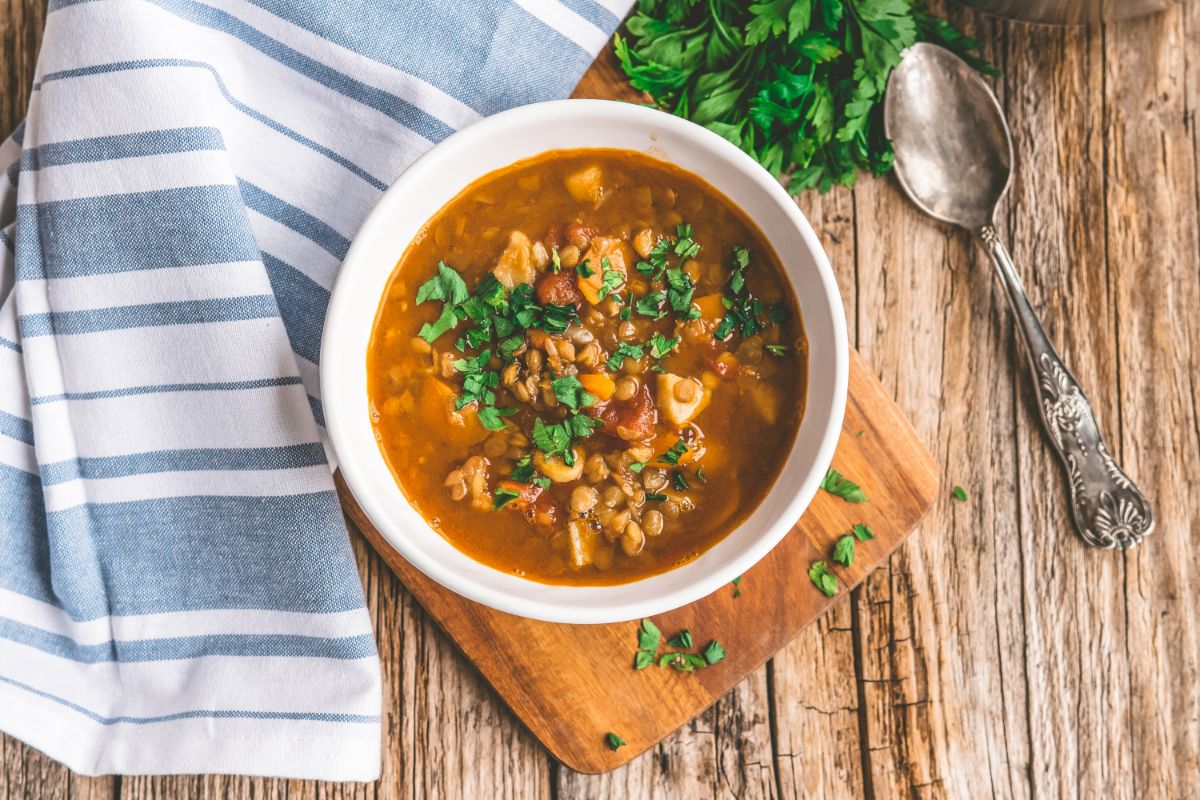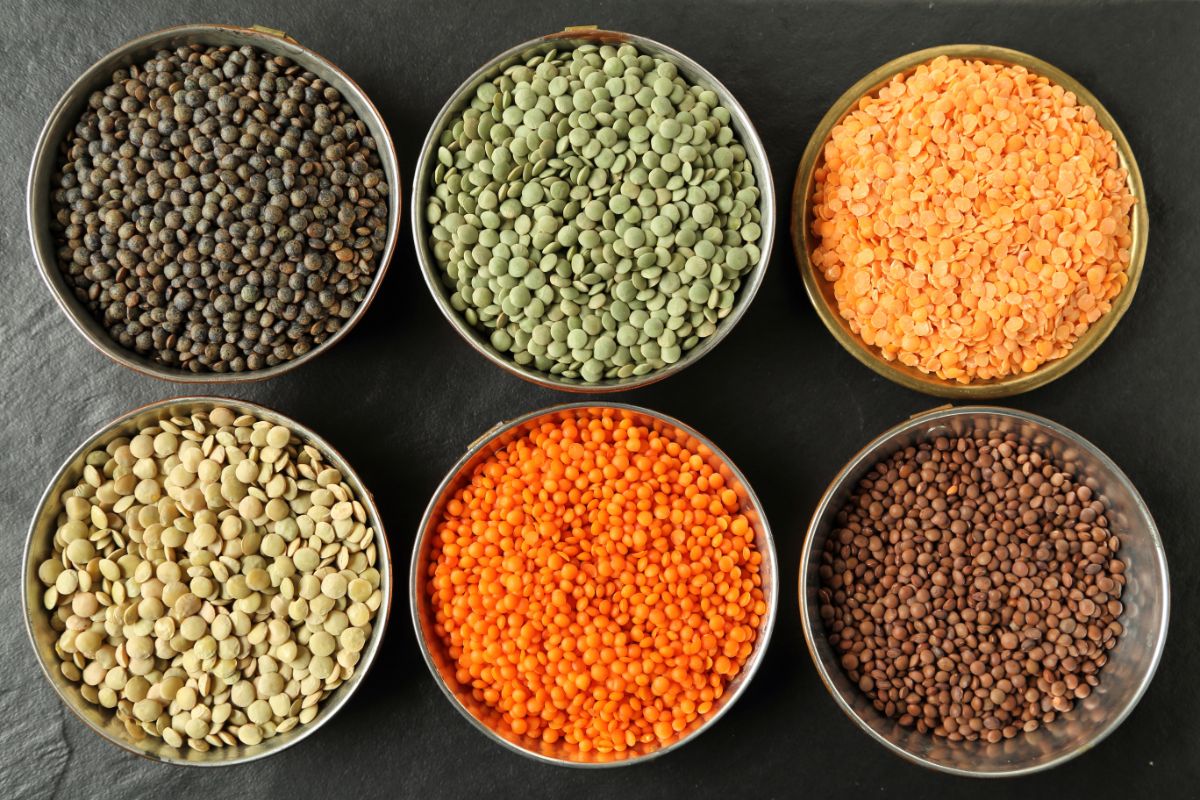For those who are just considering adopting a vegan or vegetarian lifestyle, beans, pulses, and lentils can be a real lifesaver.

There’s nothing worse than chowing down on a dish that has very little texture, but these items can help to add a lot to your dishes.
They’re an incredibly versatile ingredient, and can be used within a whole host of different recipes.
In addition to this, they’re also incredibly cost effective, so are a great thing to purchase when you’re trying to save a little money.
But, if you’re just getting started out with using legumes in your dishes, then chances are you have a whole bunch of questions like, what’s the best way to cook them? What do they really taste like?
If you’ve found yourself wondering about the questions above, then don’t worry, you’re not alone.
Below, we’re going to be exploring all there is to know about lentils, giving you a handy guide that has all the answers.
To find out more, simply keep reading below, as we take a closer look.
What Are Lentils?
Now, before we jump straight in and start taking a closer look at what lentils taste like, first we’re going to talk about what they really are.
They’ve actually been used in cooking for many centuries, and we can place their origins somewhere in the Middle East.
They’re also commonly used in Indian cooking, for curries and other savory based dishes.
One of the great things that people don’t realize about lentils is that they’re actually considered to be a superfood.
They grow on branched vines, which can be up to 24 inches tall.
They will flower from the branches which are lower down, and the flowers will produce a pod which contains approximately one to three seeds, and that’s where we get these tasty little morsels from.
The reason why lentils are considered to be a superfood, is because they’re packed to the brim with fiber, protein, iron, and folate, all of which our body needs in order to function efficiently.
To put this into perspective, a serving of lentils has more fiber than a slice of whole bread, and more protein than an egg, so they’re a great option if you want to pack in your relevant nutrients for the day.
In terms of how you can purchase lentils, you can purchase them dry, but they’re often canned in supermarkets for your convenience.
They can be used in a whole host of both dry and wet dishes, and are a great meat substitute.
What Do Lentils Taste Like?
So now that we’ve covered what lentils are, we can start to look at what they taste like. Well, this is a tricky one to answer, as it actually depends on the variety of lentil you’re purchasing.
You see, there are several different varieties of lentils out there, including green, red, French, and black.
Perhaps the most common type of lentil that you’ve seen sold in the supermarket are yellow lentils.
Yellow lentils are great because they have an incredibly mild, almost nutty taste that makes them perfect for adding to dishes such as salads and soups, where you don’t require too much of an overpowering flavor.
They’re also great for dishes such as curries, as when you cook them in a sauce, they become super soft and adopt a nice texture.
Another common type of lentil that you might have seen being used in recipes are red lentils, red lentils are again, really versatile, and great for both cold and hot dishes.
Like yellow lentils, they become soft when cooked in sauces. They have a slightly sweeter taste than yellow lentils.
Another kind of lentil is the green lentil. This one is commonly used in salads, because it retains its texture quite well, which is slightly more dense, and can help to give more texture to the dish.
They have a much richer taste than the other lentils on our list, and taste somewhat peppery.
Finally, black lentils are super rich and earthy, and are great at absorbing flavors within dishes.
How Do I Cook Lentils Properly?
Now that we’ve taken a closer look at what lentils taste like, we can move on to discuss how you cook them.
Some of you reading this article might never have cooked lentils before, and are probably wondering whether they can be put directly into dishes, or if you need to cook them first before adding them in as an ingredient.
The answer to this question is yes – you should always cook your lentils before adding them into other dishes. But don’t worry, this is a super easy process, and won’t take you very long.
In order to effectively cook your lentils, the first thing you’re going to need to do is to make sure you’ve washed them all properly, this is especially important if you’ve bought them loose.
After you’ve done this, you’re then going to transfer them to a pot, where you’ll cook them in boiling water. We would recommend three cups of water for every one cup of legumes in terms of quantity.
After you’ve cooked them for approximately 10 minutes (you don’t want them to get too mushy), you can then drain them, and transfer them to a bowl, ready to be added to any recipes you have in mind.
Should I Soak My Lentils?
This is a commonly asked question, to soak, or not to soak?
Well, we would recommend that although you can simply cook your lentils using the method above, and they’ll taste absolutely fine, if you have more time on your hands, you should soak them first.
There are many benefits to soaking lentils, with one of the key ones being health reasons. Lentils can actually produce a lot of gas in the human body, which can be uncomfortable.
Soaking your lentils beforehands helps to eliminate this issue, and makes it more digestible on the whole.
In addition to this, by soaking your lentils, the nutrients in them become more digestible.
As we mentioned above, lentils have a whole host of amazing nutrients, including calcium, zinc, and iron.
When you soak the lentils, the nutrients are bound together into digestible morsels. Finally, it also deactivates any harmful compounds that may be found in your lentils.
How To Soak Lentils
The process of soaking your lentils is actually incredibly easy, and just involves placing them in a large bowl or saucepan.
After you’ve done this, you should cover the lentils up with twice as much water, so that they’re completely below the surface.
If you want to add a little bit of extra flavor to your lentils, you could consider soaking them in water which has salt added to it, for a really easy and delicious flavor.
After you’ve adequately covered your lentils in water, you can then go ahead and leave them for at least 4 hours. If you can, we would recommend that you leave your lentils to soak overnight.
What Are Some Of The Different Ways You Can Cook Lentils?

Now that we’ve covered the soaking process, we can move on to discuss some of the different ways that you can cook lentils.
Lentils can produce a whole host of different textures, and this all depends on your method of preparing and cooking them.
We’d recommend simmering your lentils, as this is the most effective way of getting the soft yet firm texture we know and love with these delicious little morsels.
But alternatively, some people like their lentils a little bit mushier.
If you want some super creamy lentils, you can actually consider mashing them up after cooking them thoroughly, and then using this on a piece of bread or toast.
If you want to use your lentils for dishes such as salads, however, where you need a little bit of added crunch, then we’d recommend that you alternate the cooking time, so that they’re simmering for a shorter period.
Be sure to check on them regularly to see if their texture is to your liking.
What Are Some Of The Health Benefits Of Lentils?
Now that we’ve discussed some of the different ways you can prepare your lentils, we can move on to talk about some of their health benefits.
As we’ve mentioned throughout the course of this article, lentils are considered to be a superfood, and as a result, they have numerous different health benefits that can keep your body in check.
To find out more about some of the ways you might benefit from consuming more lentils, simply keep reading below, as we take a closer look.
1. Aiding Your Digestive System
One of the key benefits of lentils is that they can actually help to aid your digestive system and all of the relevant processes.
As we mentioned before, a serving of these actually contain more fiber than in a slice of whole grain bread.
Lentils contain what is known as prebiotic fiber. Prebiotic fiber is known as being particularly good at promoting the function of your digestive system, as well as fuelling the ‘good’, gut bacteria in your stomach.
It has been proven in various studies that consuming plenty of fiber in our diets is actually linked with a reduced risk of developing colon cancer later in life.
2. Packed Full Of Protein
Did we mention that lentils are also packed to the brim full of protein?
They are a great food to consume before hitting the gym, as they can actually aid you in muscle building as a result of the high protein content.
This is especially important if you’re somebody who’s following a plant based diet, as you can use this ingredient as a replacement for meat and fish.
They’re so versatile that you can pretty much add them to any dish in order to bulk it up.
3. Helps Regulate Blood Sugar
Another major health benefit that has been associated with consuming legumes, is that they can actually help to regulate your blood sugar.
They have a super low glycemic index, which means that the energy they supply your body is released gradually throughout the day, rather than being released in spurts like some processed carbohydrates.
Because they release the energy gradually, this actually helps to suppress your appetite too, and quell any food cravings that you might be getting.
This means that legumes could potentially be effective as a weight loss tool.
4. Good For Heart Health
Another reason why lentils are considered to be so fantastic is that they can actually help to improve your heart health.
They’re rich in folate, potassium and fiber, which are all nutrients that can help to aid the function of your heart.
This can help people to manage pre existing conditions such as high blood pressure and cholesterol.
Eating plenty of these lentils as a part of your diet can also help to prevent the onset of these conditions later in life.
In addition to all this, they also have a lot of Vitamin B1, which can help to keep your heartbeat regular.
5. Can Reduce Risk Of Disease
Another major benefit of lentils is that they can actually prevent you from developing chronic diseases later in life.
It has been proven that eating legumes on a regular basis, can actually decrease the risk of obesity, as well as diabetes, heart disease, and cancer.
This is because they have so many antioxidants packed inside of them, such as pehol, which can help to fight off disease in your body.
Are Legumes Okay For Everyone To Eat?
Legumes are a great food to eat for those who are looking to manage their weight, substitute meat in dishes, or in general, live a more balanced and healthier lifestyle.
But, we do want to point out one fact when it comes to lentils.
They contain something that’s commonly referred to as an ‘anti-nutrient’, which means that it has phytic acid which works to bind the nutrients together.
Although this might sound like a good thing, it actually makes many of the minerals in the legume more difficult for our bodies to absorb, therefore, we may not get the most out of them nutritionally.
This is why we recommend again that you soak your lentils beforehand, as this can help to break down the phytic acid, so that the nutrients in the legumes are more absorbable in your body.
Some people may have an allergic reaction to lentils, although this isn’t considered to be incredibly common.
Chances are that if you’ve experienced an allergic reaction to one kind of legume, you should probably steer clear of them all in order to be safe.
Final Thoughts
To sum up, the taste of the lentils depends completely on what variety you purchase.
Probably one of the most common varieties of lentils you’ll find in the supermarket are yellow lentils, which are known for having an incredibly mild, earthy, somewhat nutty flavor.
On the other hand, black lentils are known for being much richer in terms of flavor, and display an incredibly strong earthy taste that works really well in salads.
Green lentils, on the other hand, are known for peppery in terms of flavor, which separates them from the other varieties.
Finally, red lentils are another popular variety of lentil, and are known for having a very earthy taste, that’s slightly sweeter than the other ones.
We’d recommend that before cooking your lentils, that you place them in a bowl of water in order to allow them to soak sufficiently.
This will help to break down the ‘anti-nutrients’, in the legumes, and essentially make all of the goodness they provide more absorbable in your body.






